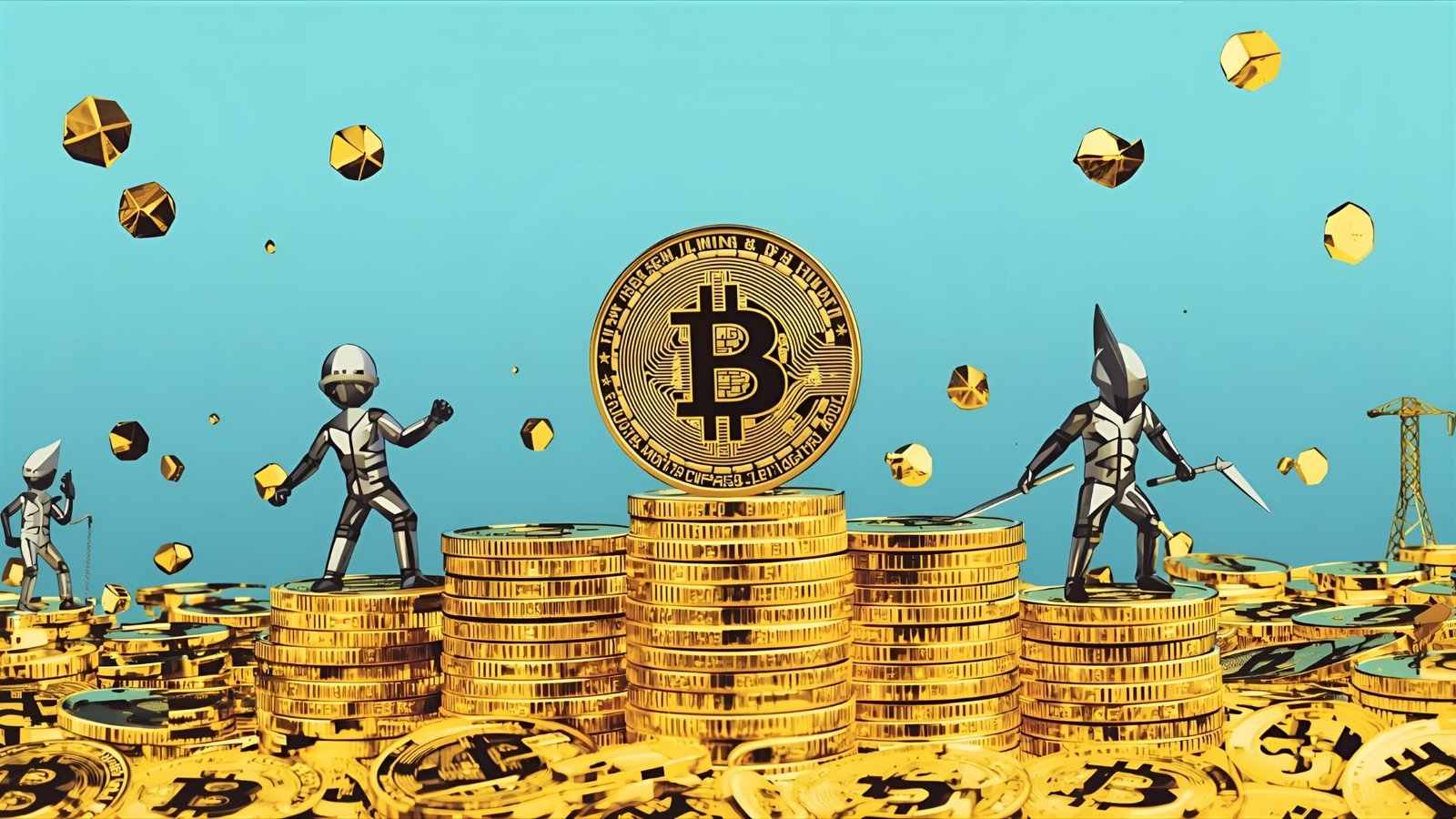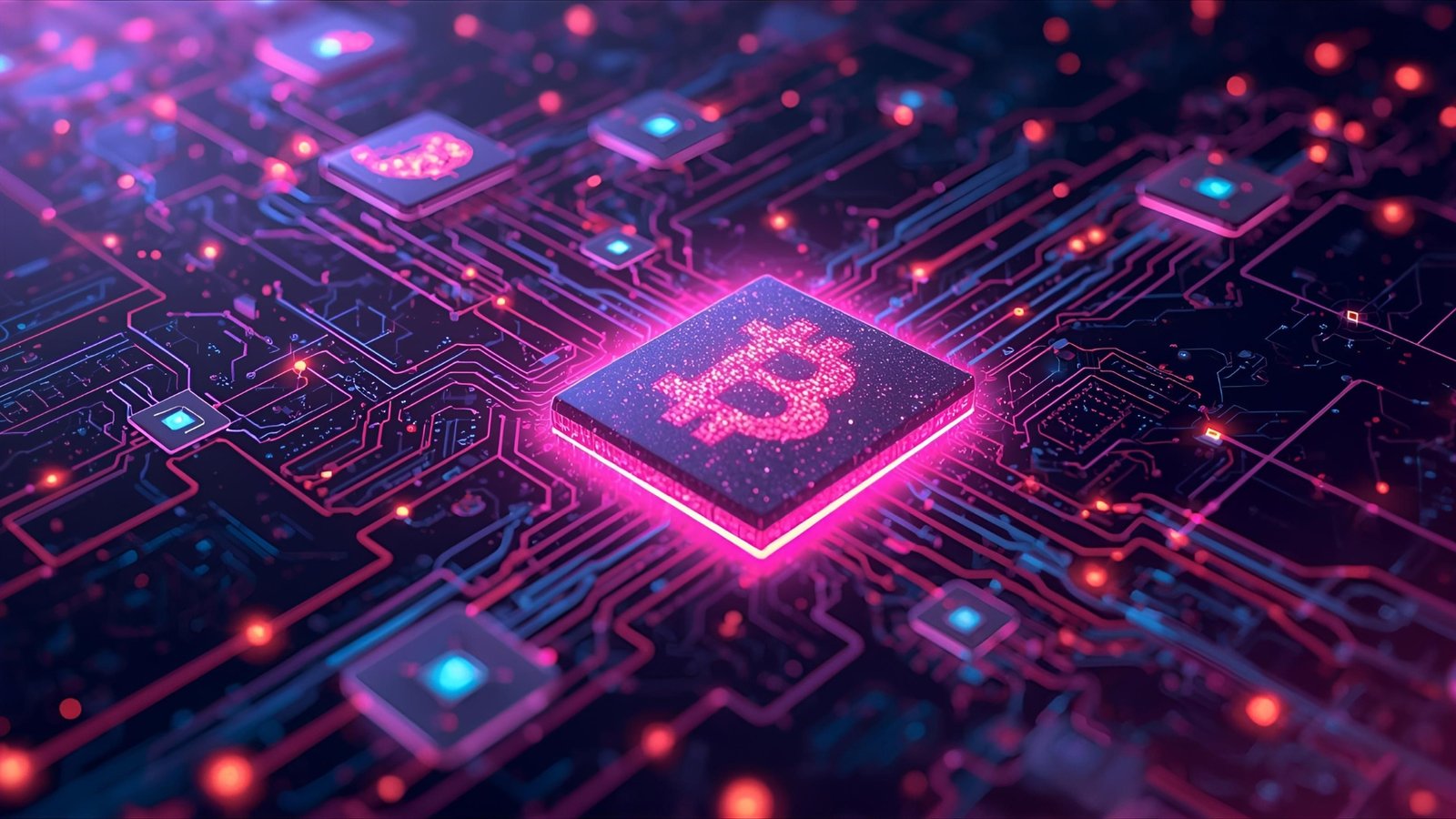Bitcoin Mining Difficulty All-Time High Can a Meme Coin Help?
As Bitcoin mining difficulty all-time high pressures profits, discover how a new meme coin claims to make mining easier—tools, tokenomics, and risks.

The network just set a new record, and miners can feel it in their wallets: Bitcoin mining difficulty all-time high. Every upward adjustment means more computational muscle is competing to secure blocks, shrinking margins, and squeezing home-rig hobbyists and midsize operations alike. Yet a curious trend is emerging alongside this climb: the arrival of a meme-themed crypto project promising to “make mining a whole lot easier.”
In a market that celebrates both technical grit and internet culture, a “mining-friendly” meme coin sounds like a punchline—and a potential lifeline. This article unpacks what a difficulty spike really means, why it keeps hitting records, and how a meme coin could lower barriers through pooled resources, novel incentives, or auxiliary rewards.
We’ll explore whether these features can genuinely alleviate the pressure of Bitcoin mining’s all-time high difficulty, or whether they’re just another shiny story in a market full of them.
Bitcoin mining difficulty all-time high
Reaching a Bitcoin mining difficulty all-time high is not a one-off event; it’s a function of Bitcoin’s design. Roughly every two weeks, the network recalibrates the difficulty so that locks continue to land about every ten minutes, despite changes in total hashrate.
When more miners join or machines become more efficient, the algorithm boosts difficulty. The effect feels like a treadmill gradually speeding up. If your hashpower stays the same while everyone else upgrades, your share of rewards declines.
This new peak signals rising competition and better gear deployment. With ASIC manufacturers rolling out more efficient machines, fleets rebalancing after regional energy shifts, and industrial-scale farms optimizing their uptime, the baseline continues to ratchet higher.
For a retail miner, that means every satoshi is harder to capture, especially when energy prices wobble and hardware ages. The record serves as both a badge of network security and an alarm bell for profitability models that relied on softer conditions. In this climate, tools that promise “easier mining” demand a closer look.
What does difficulty mean for profitability and strategy
When Bitcoin mining difficulty reaches its all-time high, revenue per terahash generally trends lower unless Bitcoin’s price compensates., miners then respond in three ways: optimize, diversify, or capitulate. Optimization encompasses firmware tuning, immersion cooling, advanced workload management, and power arbitrage.
Diversification adds revenue streams through hosting services, high-performance computing leases, or participation in alternative networks. Capitulation is the harsh outcome: shutting rigs, selling hardware, or exiting the game.
A meme coin that markets itself as a mining ally tries to insert a fourth path: supplemental incentives. The project might airdrop tokens to miners, offer discounts on hardware through partnerships, or create “hash-to-earn” pools that reward contributors in both BTC and the meme token. In theory, these incentives cushion downturns when Bitcoin mining difficulty reaches an all-time high and erodes margins.
In practice, the question is sustainability. Incentives funded by emissions can fade if token demand doesn’t keep up. Hardware discounts are effective only if vendors honor them, and logistics can be managed at scale. Hash-to-earn can be compelling—but then governance, smart-contract security, and payout transparency matter immensely.
The meme coin promise: making mining easier, or just louder?
Meme coins have historically excelled at community building, not infrastructure. That’s why claims to ease mining deserve scrutiny. A credible “mining-friendly” meme coin would need more than witty branding. It should map precise mechanisms that interact with the mining stack while preserving Bitcoin’s ethos of trust minimization.
Imagine a token that doesn’t try to alter Bitcoin’s consensus but layers on optional benefits: energy rebates through partnerships with renewable providers, shared procurement clubs for ASICs, pooled maintenance contracts, or software that auto-routes hashrate to the best-paying pool and then skims token bonuses to miners.
In this design, the meme coin acts like a loyalty layer for a fragmented industry. If it works, small operators gain collective bargaining power and predictable perks—precisely what you want when Bitcoin mining difficulty reaches an all-time high and squeezes margins.
Yet the devil lives in details. Are rebates audited? Who manages custody of pooled funds? How are tokens distributed—purely by hashrate, or also by verified energy efficiency to encourage greener operations? Without transparent answers, “easier mining” risks becoming empty marketing during a time when miners crave tangible relief.
Tokenomics that actually support miners

To be more than a meme, tokenomics must translate into real-world benefits when Bitcoin’s mining difficulty reaches an all-time high. A plausible approach might allocate a fixed share of emissions to miners who verify hash contributions via non-custodial proofs.
Another share could fund grants for efficiency upgrades—such as firmware licenses, immersion retrofits, or even microloans for solar arrays. Buybacks funded by protocol revenue (such as marketplace fees for hash contracts) might stabilise markets, though they should be transparently governed to avoid moral hazard.
Crucially, distribution must discourage gaming. If rewards flow only to hashrate, whales win by default; if rewards penalise energy intensity without robust verification, honest miners lose to sophisticated spoofing. The ideal model weighs Bitcoin mining difficulty at its all-time high in the context of verifiable efficiency. Pairing on-chain claims with off-chain attestations—such as metered energy data from reputable providers—can align incentives with sustainability, thereby enhancing optics and regulatory perception.
How “easier mining” could work in practice
Picture a miner with mid-range ASICs and fluctuating power rates. When the Bitcoin mining difficulty hits an all-time high again, earnings dip below a comfortable threshold. The miner toggles on a meme-coin companion app.
The app routes their hashrate to a pool that’s integrated with the token’s rewards engine. Each payout includes BTC plus a proportional meme-coin bonus. Additionally, the app checks a marketplace for time-of-day energy discounts that the project’s partners have negotiated. It suggests shifting workloads to a lower-rate window and offers a bulk-purchase coupon for replacement fans and PSUs.
This setup doesn’t magically rewrite Bitcoin’s economics. What it does is stack marginal advantages. Suppose token bonuses add a few percentage points to yield. In that case, energy arbitrage saves another slice, and the miner qualifies for a rebate on hardware refurbishing.
The cumulative impact can be felt. In months where Bitcoin’s price lags and the all-time high in Bitcoin mining difficulty persists, these incremental edges can be the difference between running hot and powering down.
The UX miners actually need
For any project claiming to simplify mining, the user experience matters. Miners don’t want to babysit dashboards or chase ephemeral “quests.” They require reliable integrations with major pools, straightforward wallet flows, and transparent, auditable reward statements.
An autopilot that benchmarks pools, forecasts revenue under different difficulty and price scenarios, and recommends energy timing would be far more valuable than a carnival of social badges. Especially under Bitcoin mining difficulty conditions at an all-time high, time is scarce; automation that respects sovereignty—non-custodial wallets, exportable logs, and permissionless exits—earns trust.
Energy markets, geography, and the difficulty treadmill
Mining is a global arbitrage on electricity. When the Bitcoin mining difficulty reaches an all-time high and coincides with elevated energy prices, miners migrate virtually or physically. They seek stranded hydropower, off-peak nuclear, curtailed wind, or flare-gas mitigation sites.
A meme coin can’t change thermodynamics, but it can organise purchasing power to negotiate better rates, token-gate community solar co-ops, or streamline contracts for behind-the-meter deals. If token holders support power projects that share revenue with miners who commit to a specific hashrate, the line between community and co-op blurs in a productive way.
The geographic angle also exposes regulatory risk. Jurisdictions differ in their noise limits, grid interconnection requirements, and taxation policies. A project that truly helps miners during a Bitcoin mining difficulty all-time high period would invest in compliance templates and legal toolkits, lowering friction for small operators to set up shop responsibly. Education, combined with standardised paperwork, can be as potent as token rewards when time and uncertainty erode margins.
Halvings, hashrate, and the meme layer

Every halving slices block rewards in half, amplifying the effect of any Bitcoin mining difficulty all-time high. Halvings compel miners to chase efficiency or scale; they also reward those with diversified revenue. A meme coin that ties benefits to provable participation could ride the cultural wave surrounding halvings, recruiting enthusiasts to subsidise miner-friendly programs.
But these mechanics must withstand cycles. Bear markets love to test treasuries. Governance should forecast long-run obligations so that promises made in euphoric times still hold when sentiment chills.
Security, transparency, and trust in a meme world
Security isn’t optional. When the stakes rise due to Bitcoin mining difficulty reaching an all-time high, the last thing miners need is the risk of smart-contract failure. Any protocol handling rewards, escrow, or marketplace collateral should undergo reputable audits, publish on-chain analytics, and implement circuit breakers to ensure transparency and security.
Transparency extends to token allocations, team vesting, and market-making arrangements. If liquidity support exists, it should be disclosed and time-bound. These steps don’t kill the fun of a meme coin; they give it a spine. Miners will take “fun with fundamentals” over “fun with fuzzy math” every time.
Community governance that respects operators
Miners often under-index in token governance because they’re busy running machines. A project serious about easing the lives of Bitcoin miners during the all-time high in mining difficulty should prioritise governance toward active contributors.
Snapshotting hashrate-linked proofs, rewarding proposals that demonstrably reduce operating expenses, and funding research on firmware and cooling improvements aligns politics with productivity. If a treasury must choose between a celebrity endorsement and subsidising immersion materials for community farms, the vote should favour the latter on principle.
Measuring whether the meme coin actually helps
Claims are easy; metrics are more complex. To test whether a token truly makes mining easier during Bitcoin’s all-time high in mining difficulty, miners can track the net yield uplift versus a baseline. Define baseline as BTC-only payouts minus electricity and maintenance at the same hashrate, across the same time window.
Then compute the token-adjusted yield after including meme-coin rewards, rebates, and negotiated rate benefits. Adjust for token volatility by marking rewards to market on the day received. Suppose the uplift is material and consistent—say, a few percentage points that persist through multiple adjustments—then the project is delivering. If not, it’s branding, not benefit.
Miners should also monitor operational friction. If integrations break, payouts stall, or KYC overhead explodes, the opportunity cost can outweigh token rewards. Ease of exit matters too. When conditions change—as they do under persistent Bitcoin mining difficulty all-time high regimes—operators must pivot quickly without lockups.
Risks to keep in view
There’s model risk if token demand falters. There’s counterparty risk if energy partnerships fail or are overpromised. There’s governance drift if voting power concentrates among speculators indifferent to miners’ needs.
Smart-contract bugs, treasury mismanagement, and opaque market-making can all magnify damage precisely when the all-time high Bitcoin mining difficulty is already straining cash flow. Miners should diversify their exposure, avoid concentrating in any single rewards stream, and prioritise setups that remain viable on Bitcoin economics alone. The meme layer should be additive, not a crutch.
Red flags vs. green flags
Red flags include vague tokenomics, unaudited contracts, hand-wavy “guaranteed” yields, and aggressive lockups. Green flags look like public audits, non-custodial reward claims, verifiable energy discounts, and governance that funds practical miner tools. If a project publishes transparent dashboards showing how many operators earned a measurable uplift during the all-time high in Bitcoin mining difficulty, that beats any celebrity tweet.
Practical checklist for miners considering a “mining-easier” meme coin
Start by mapping your current profit and loss (P&L) statement. Estimate how your revenue changes with each difficulty adjustment. Then, overlay the token’s promised benefits.
Can you claim them without custody risks? Are they automatic or manual? How volatile is the token, and how liquid are the markets you’d use to realise rewards? Do energy partners operate in your jurisdiction? How often has the project sustained payouts during periods of prolonged Bitcoin mining difficulty, including all-time highs in difficulty? Finally, trial with a subset of hashrate, measure rigorously, and only then scale.
Education and support
Documentation should be crisp. Suppose the project makes bold claims about helping with Bitcoin mining during the all-time high in difficulty. In that case, it should also publish beginner-to-pro guides, from setting up the app to optimising power usage and firmware. Office hours with engineers, community AMAs with auditors, and transparent roadmaps can turn curious miners into long-term contributors.
The broader investor angle
Non-miners might ask why they should care. The answer is that miner health affects network decentralisation and security. Sustainable miners weather bear cycles; over-levered miners liquidate and centralise power.
If a meme coin genuinely supports operators during Bitcoin’s all-time high in mining difficulty, it supports the network’s resilience. Investors who hold the token are then indirectly backing a healthier mining landscape. However, this only holds if incentives align with outcomes, not optics.
Conclusion
As the network reaches another all-time high in Bitcoin mining difficulty, the pressure is real—but so is the potential for creative solutions. If you’re a miner or an investor who believes in decentralisation, explore projects that convert community energy into practical tools.
Demand audits, measurable uplift, and non-custodial flows. Start small, test rigorously, and scale what works. Ready to see whether a meme coin can genuinely make your operation more resilient under Bitcoin mining difficulty all-time high conditions?
Run a 30-day trial with a portion of your hashrate, benchmark results, and share your findings with the community. Your data—and your voice—can help separate real innovation from noise.
See More: Bitcoin Mining Difficulty Hits Powerful Record High: 3 Key Fac




